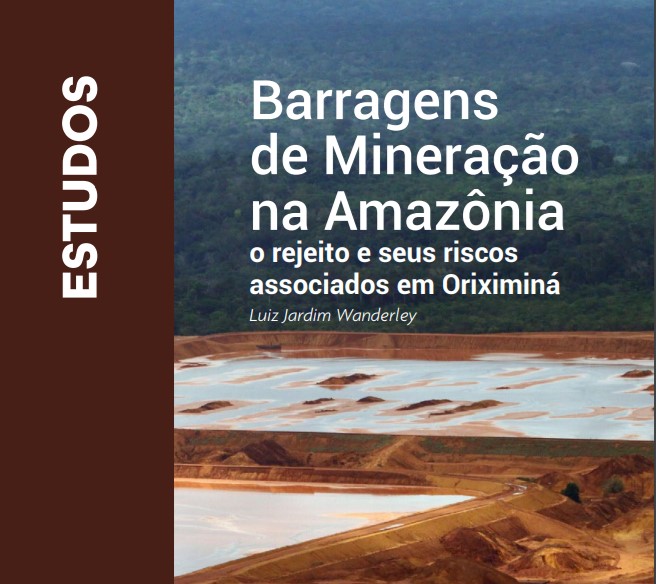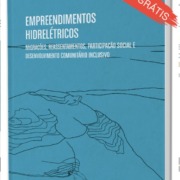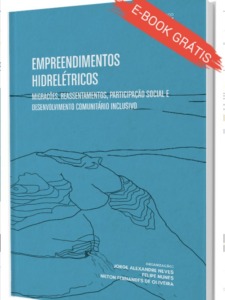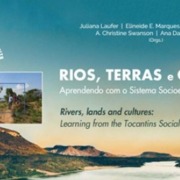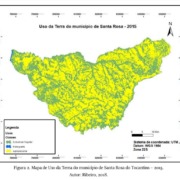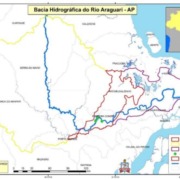Chapter 4.1.5 of Rios, Terras e Culturas: aprendendo com o Sistema Socioecológico do Tocantins (Rivers, lands and cultures: Learning from the Tocantins Social-ecological System)
by Juliana Laufer; Elineide E. Marques; Simone Athayde; A. Christine Swanson; Ana Daisy A. Zagallo (Orgs.)
AVALIAÇÃO DOS CASOS DE DENGUE NO MUNICÍPIO DE ESTREITO (MA), CIDADE SOB INFLUÊNCIA DA USINA HIDRELÉTRICA DE ESTREITO
Na seção 4, no capítulo 4.1.5 deste livro, o artigo tem o objetivo de avaliar a incidência dos casos de dengue no município de Estreito/MA, município sob influência da UHE Estreito. Trata-se de uma pesquisa do tipo quantitativa, epidemiológica, descritiva e analítica. A formação de um lago, como qualquer outra obra humana, gera impactos ambientais, em escala maior ou menor dependendo do tamanho do empreendimento, levando a modificação do ecossistema, destruição da biodiversidade, alterações macro e microclimáticas, são esses fatores essenciais para disseminação de doenças causadas por bactérias, vírus, parasitos e vetores.
Para ler o texto completo acesse o link: https://www.editorafi.org/19rios
Ressaltamos que nesta seção os textos foram publicados no idioma dos autores, na forma de resumo expandido das pesquisas.
*********
EVALUATION OF DENGUE CASES IN THE MUNICIPALITY OF ESTREITO (MA), CITY UNDER THE INFLUENCE OF THE ESTREITO HYDROELECTRIC PLANT
In section 4, in chapter 4.1.5 of this book, the article aims to assess the incidence of dengue cases in the municipality of Estreito/MA, a municipality under the influence of the Estreito HPP. This is a quantitative, epidemiological, descriptive and analytical research. The formation of a lake, like any other human work, generates environmental impacts, on a larger or smaller scale depending on the size of the project, leading to ecosystem modification, biodiversity destruction, macro and microclimatic changes, these are essential factors for the spread of diseases caused by bacteria, viruses, parasites and vectors.
To read the full text, access the link: https://www.editorafi.org/19rios
Note that in this section the texts were published in the language of the authors, in the form of an expanded summary of the research.

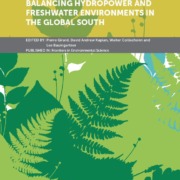
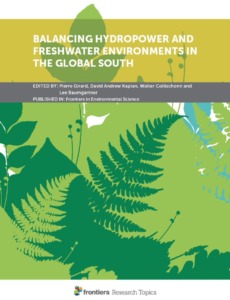

 Apresentamos esse livro que reúne trabalhos de vários pesquisadores e tem como objeto de estudo o Desenvolvimento Regional no contexto amazônico. Este e-book completa um projeto de publicação colaborativa entre um grupo de pesquisadores e amigos, inclusive de instituições amazônicas parceiras da RBA. Este faz parte de uma coletânea juntamente com os outros dois e-books anteriormente publicados, que são: AMAZÔNIA: Desafios e Perspectivas para o Desenvolvimento Regional (2014) e AMAZÔNIA: Aspectos Singulares para o Desenvolvimento Regional (2019), este livro intitulado: DESENVOLVIMENTO REGIONAL NA AMAZÔNIA: Infraestrutura, Capital Humano, Renda e Trabalho, apresenta como característica principal a composição por artigos científicos construídos por docentes, discentes, pesquisadores e amigos que discutem em seus estudos e pesquisas temas ligados à temática do livro. Este e-book assim como os demais trabalhos deste grupo tem o seu acesso livre para pesquisas e leitura de forma a ser um objeto de compartilhamento de informação e conhecimento agregado acerca dos temas aqui abordados. Desejamos uma excelente leitura e reflexão acerca dos artigos aqui compartilhados.
Apresentamos esse livro que reúne trabalhos de vários pesquisadores e tem como objeto de estudo o Desenvolvimento Regional no contexto amazônico. Este e-book completa um projeto de publicação colaborativa entre um grupo de pesquisadores e amigos, inclusive de instituições amazônicas parceiras da RBA. Este faz parte de uma coletânea juntamente com os outros dois e-books anteriormente publicados, que são: AMAZÔNIA: Desafios e Perspectivas para o Desenvolvimento Regional (2014) e AMAZÔNIA: Aspectos Singulares para o Desenvolvimento Regional (2019), este livro intitulado: DESENVOLVIMENTO REGIONAL NA AMAZÔNIA: Infraestrutura, Capital Humano, Renda e Trabalho, apresenta como característica principal a composição por artigos científicos construídos por docentes, discentes, pesquisadores e amigos que discutem em seus estudos e pesquisas temas ligados à temática do livro. Este e-book assim como os demais trabalhos deste grupo tem o seu acesso livre para pesquisas e leitura de forma a ser um objeto de compartilhamento de informação e conhecimento agregado acerca dos temas aqui abordados. Desejamos uma excelente leitura e reflexão acerca dos artigos aqui compartilhados.
